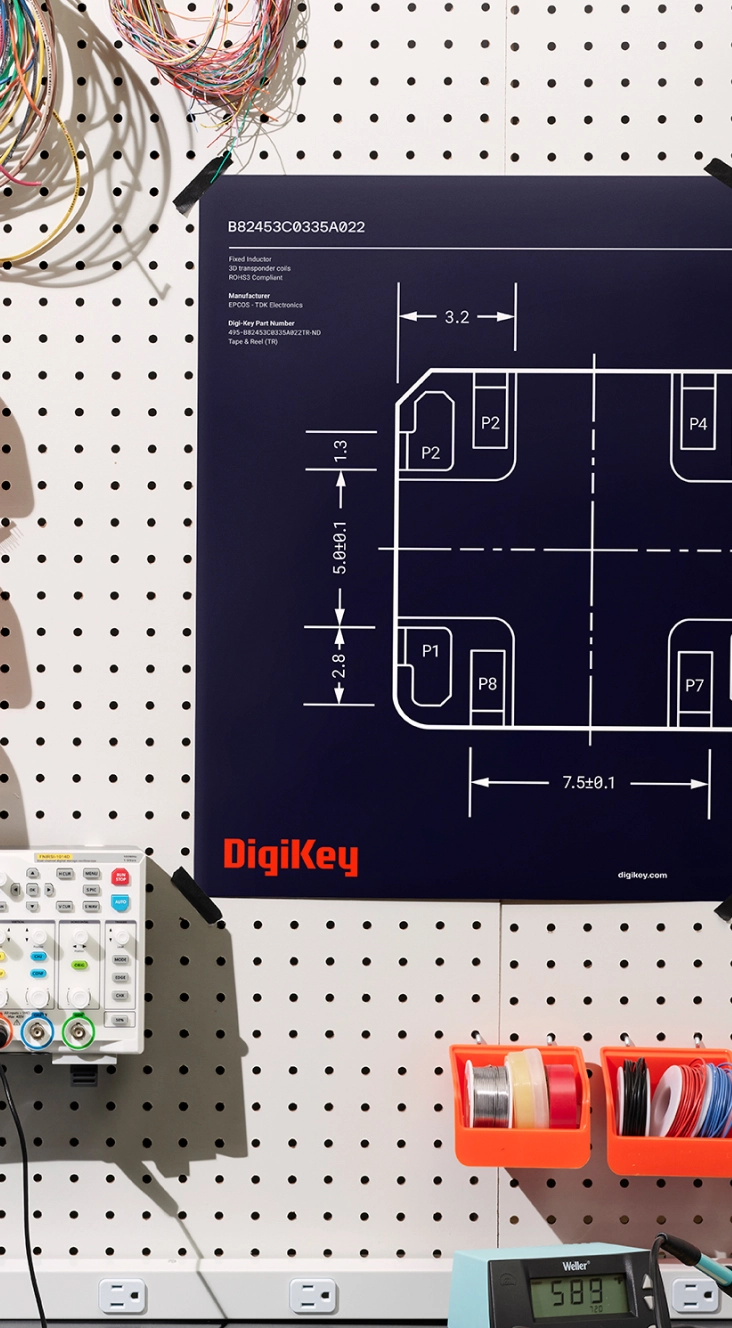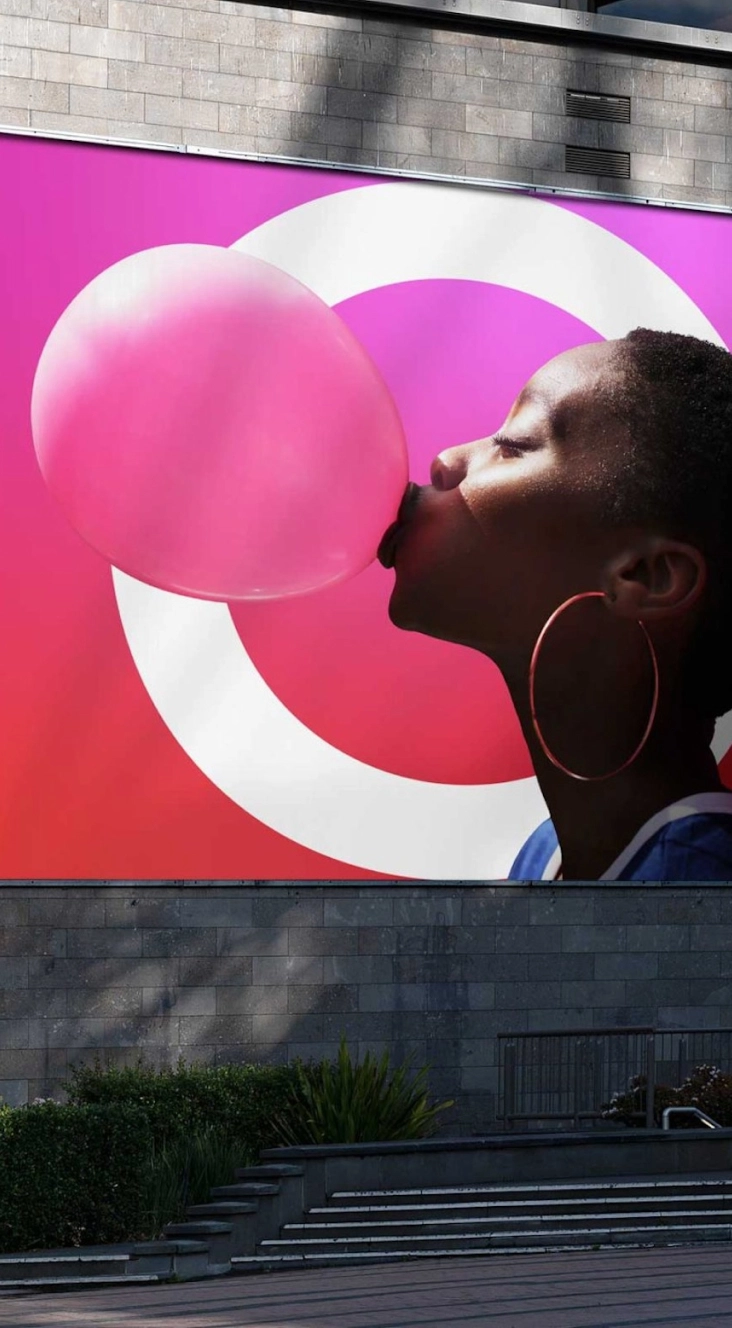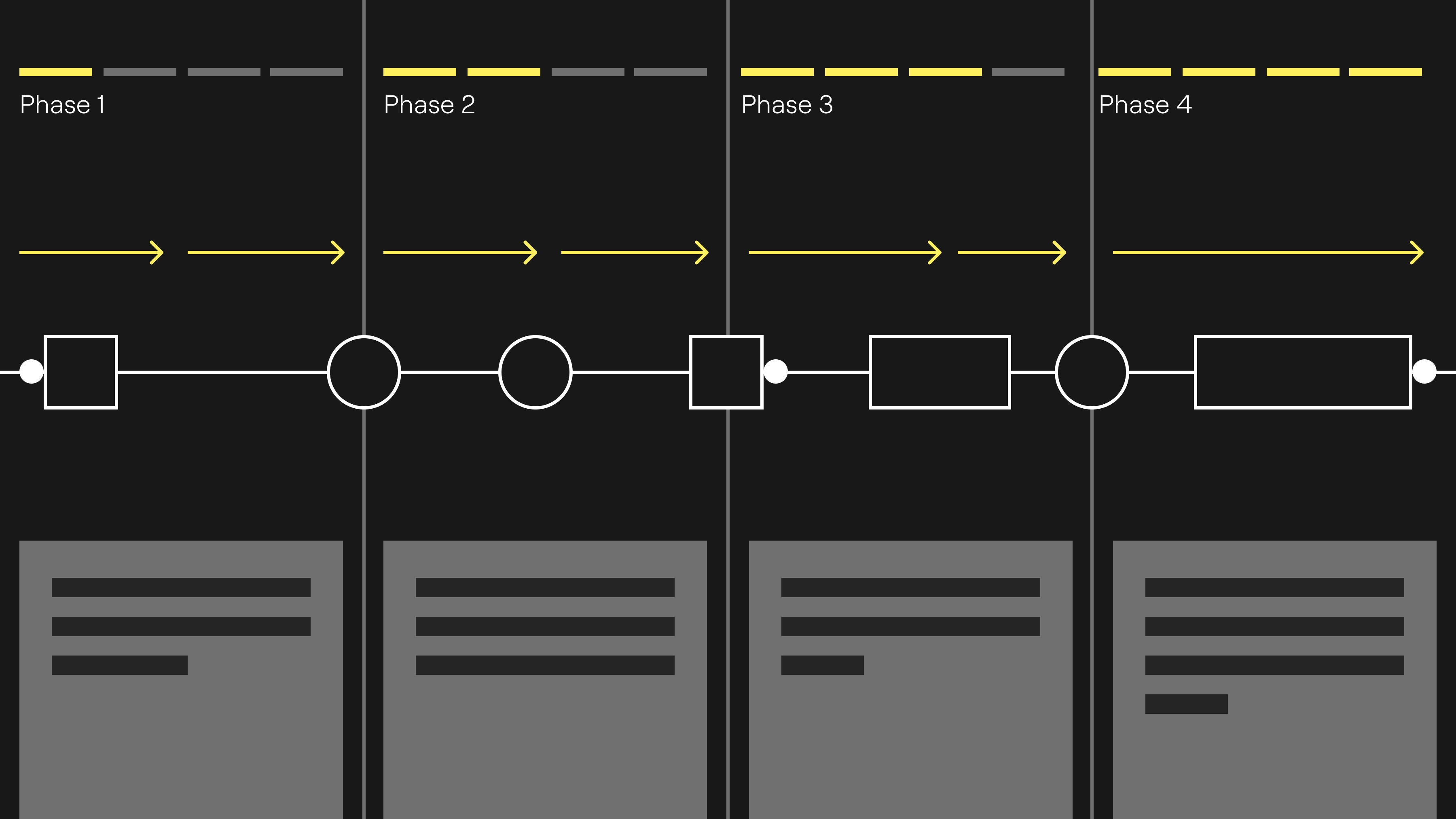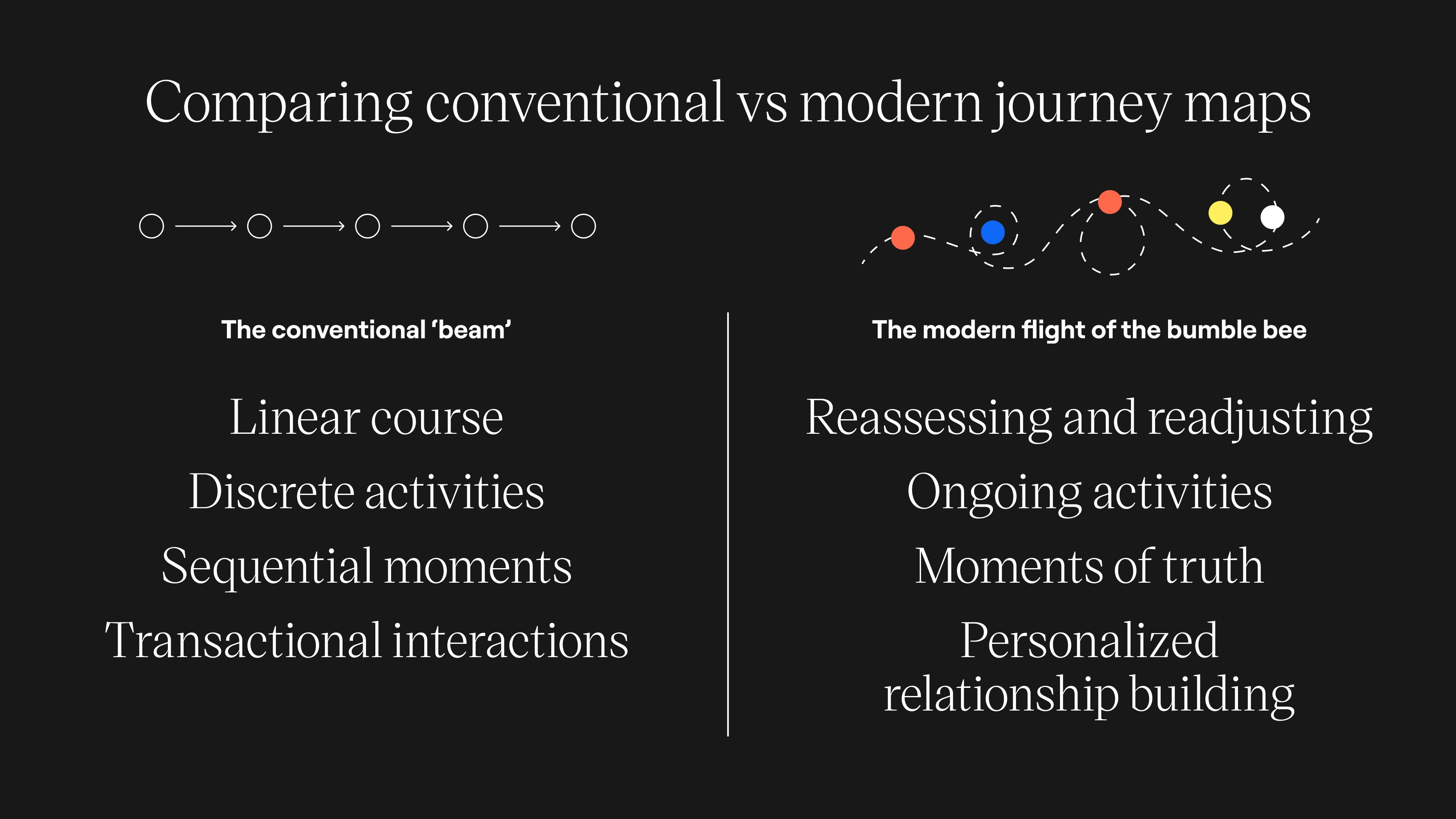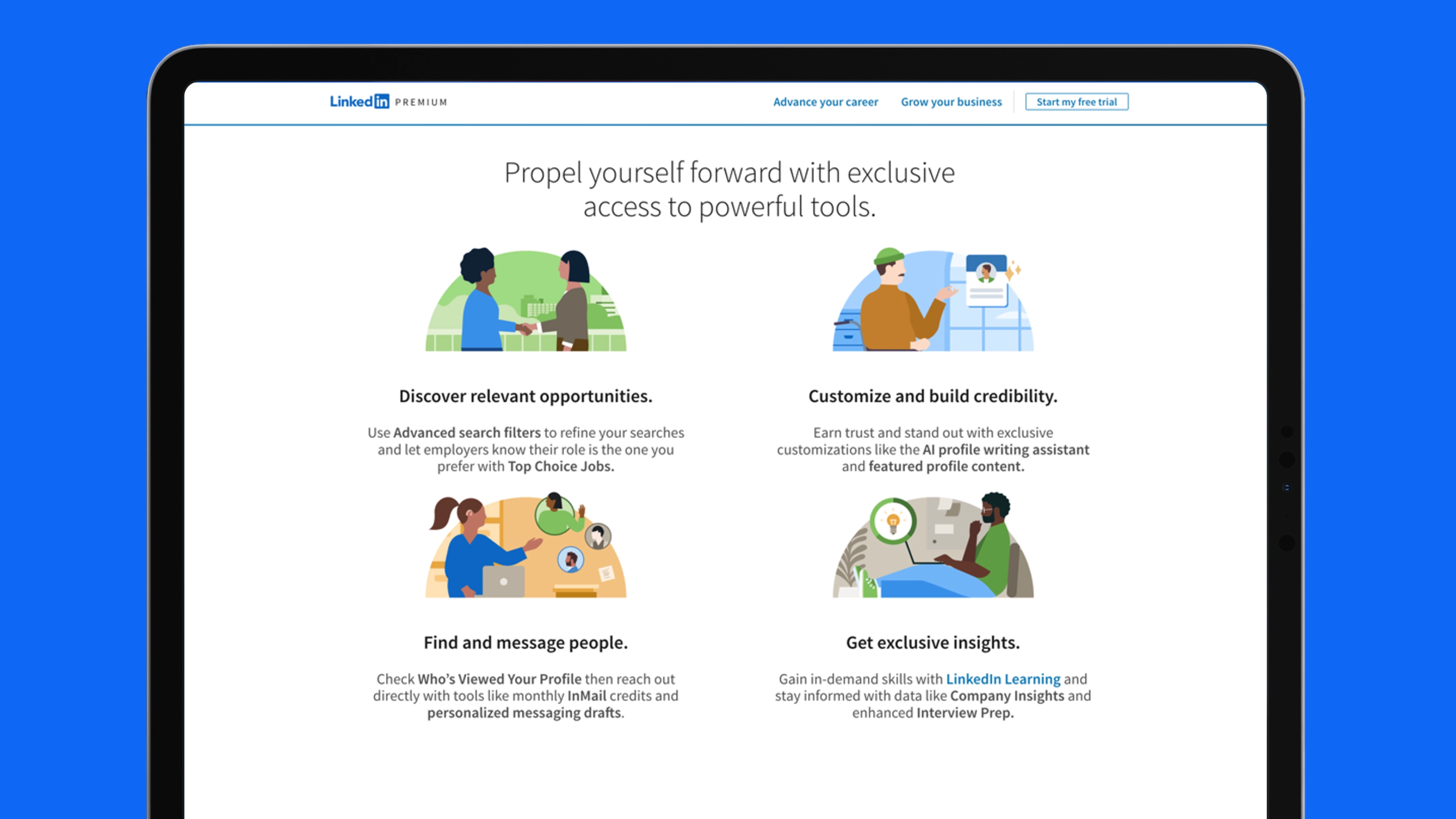March 3, 2025
?fmt=webp-alpha&qlt=100)
The journey is more important than the destination.
For the savviest, most data-driven marketers, the trusted companion on the quest to be more customer-centric and personalized has always been the customer journey map.
It’s no surprise why. Journey maps are a powerful tool that give marketers a glimpse into a customer’s attitudes, expectations, and pain points throughout their journey with a brand. And the best journey maps provide more than just insight - generating business value by helping marketers develop new offerings, finetune marketing experiences, and spark game-changing innovation.
But in an ever-evolving landscape, where macroeconomic uncertainty and technological disruption are commonplace, customer journeys have taken on a new form with more twists and turns than ever before. The linear journeys that marketers once envisioned for their customers is far from a straight shot to success – directing marketers down dead-end roads, rather than driving them closer to their customers.
This dilemma has become the norm for today’s seasoned marketers. The traditional journey map – once lauded as a marketer’s trusted best friend – is losing its utility because it no longer reflects the realities of customer behavior. Today’s journey maps are proving to be a roadmap to nowhere. They lack precision and trivialize customer journeys as linear and straightforward. And their tactical focus on user flow misses important insights that are critical to enabling customer progress at make or break moments.
To be successful, customer journey maps need to be more dynamic in their approach, reflecting the rhythm and nuances of customer behavior. Modern journey maps look and feel fundamentally different from their linear predecessors, empowering customer progress that resembles ‘the flight of the bumble bee,’ rather than a straight shot ‘tractor beam.’
Today’s leading brands are transforming their experiences to reflect this new reality, anticipating different movements and detours along the customer journey. And they do so by recognizing the unique characteristics of these non-linear journeys – designing experiences that don’t merely flatten these types of movements, but ultimately enhance them for customers.
There are three key ways that brands support progress within their experiences:
- Optimizing for immediate micro-adjustments
- Supporting broader macro-adjustments
- Leveraging triggers and signals to spur movement
Sometimes, forward progress is an iterative journey, and micro-adjustments are those frequent and helpful back-and-forth steps customers take to make progress. IKEA recognizes that these types of movements characterize the process of buying furniture for your home: the couch impacts the rug, the rug impacts the table, the table impacts the chairs, but then the chairs impact the couch you originally chose – and so on.
To prevent this downward spiral, IKEA developed their Kreativ Home Design augmented reality tool to help customers in this circular process. Like many augmented reality tools, Kreative Home Design helps visualize furniture within a space, but it goes one step further. Users can shop directly from the visualized experience to immediately understand how all their choices work together in their room, and – just as importantly – in their budget. It also warns them when certain pieces overlap or won’t fit and recommends alternative products. And for those who are particularly paralyzed by choice, IKEA offers quick access to design consultants to give shoppers the confidence to move forward, and get one step closer to not just seeing their room, but living in it.
Supporting broader macro-adjustments
Many journeys – particularly the longer ones – often require multiple steps back along the journey, in order to continue moving forward. Macro-adjustments reflect those more infrequent but very critical moments, when people need to evolve plans or readjust goals. Navigating your career is rife with these moments – be they job switches, career pivots, or even layoffs – and LinkedIn’s marketing experience is catered to enable progress during these critical moments.
Incentives and prompts to sign up for LinkedIn Premium – their signature subscription service – are ever-present yet subtle, for easy access the moment the services are needed. Additionally, LinkedIn’s enhanced LinkedIn learning platform allows users to create a personalized learning path based on desired career goals, and then recommends the best courses to take to meet those goals. By designing experiences this way to facilitate users during macro-adjustments, LinkedIn ensures that one step back is always followed by two steps forward.
Leveraging triggers and signals to spur movement
The flight of the bumble-bee isn’t random. Movement is often triggered by some new action that takes place, and leading brands can leverage their customer data to create these kick-starting moments to initiate new journeys with customers. Intuit Credit Karma, for example, uses insights gained from linked credit scores, bank accounts, credit cards, loans, and more to create targeted recommendations that are optimized for customers’ financial profiles. Changes in credit score can be a big driver of financial activity, and when Credit Karma notifies users of changes, it doesn’t just share the facts – it identifies immediate, actionable opportunities that users can capitalize on, whether that’s applying for a credit card with a higher limit, or consolidating outstanding debt to simplify payments. It does the same thing when it sends users quarterly financial summaries, highlighting key changes in their financial picture, or celebrations of financial milestones.
By activating customer data at the right moments in ways that aren’t just insightful but also prompt action, Intuit Credit Karma is able to keep users on the steady trajectory to greater financial health over the long and inevitably winding journey of their financial lives.
Engagement: the most important weapon in your arsenal
Creating optimal journey experiences has tremendous marketing benefits. Companies that lead with brand and experience design utilize every touchpoint to its fullest potential. Think of the marketing funnel. The top gets lots of love as it is an awareness play. Likewise, the bottom is equally well understood as acquisition. But what happens in the middle?
Marketers often refer to this as the "dark funnel”—and it's where the flight of the bumble bee is in full effect, and where planning experience design becomes critical. Content, shareability, advocacy, and interactivity must reflect how people naturally engage.
In today's complex marketing landscape, the mid-funnel has emerged as a crucial yet underutilized stage. The flight of the bumblebee shows how non-linear customer behavior works, but it’s at the mid-funnel where consideration and engagement occur. And to achieve progress in the messy middle, customers need interactive experiences to convert interest into action.
Brands like IKEA and LinkedIn, which incorporate mid-funnel engagement, ensure that each touchpoint guides customers seamlessly toward advocacy and loyalty. By focusing on these pivotal moments, brands foster consideration, engagement, and long-term relationships.
For more insights, explore mid-funnel thinking here.
“In today's complex marketing landscape, the mid-funnel has emerged as a crucial yet underutilized stage...to achieve progress in the messy middle, customers need interactive experiences to convert interest into action.”
Consider the following best practices to augment the impact of journey maps in your business:
To gain a richer understanding of your customers, map their journey from different altitudes that provide an overview of potential micro and macro adjustments, in addition to the triggers that may initiate new journeys.
Needs and emotional states are key facets of any journey map. But the revelatory insights that drive customer action are ultimately founded upon the jobs to be done – the underlying problems or opportunities that a customer is trying to solve.
Uncover opportunities for signature experiences that are game-changing and differentiating, but importantly exceed customer expectations during key ‘Moments of truth’ that have the power to make or break the experience.
Successful journey maps are developed, owned, and managed by cross-functional teams, breaking down siloes to create a singular view of how to engage customers within the experience.
To enhance your journey maps, ensure that the mid-funnel stages—where customers are not only engaging but actively evaluating their choices—are robustly considered. These are your opportunities to prioritize interactive and shareable content that mimics the natural back-and-forth movement of customers at this stage. By embracing personalized content and advocacy tools, brands can nurture relationships and drive down-funnel movement.
Reimagining customer journey maps is not just beneficial, but essential for marketers seeking to navigate the intricate realities of modern consumer behavior. By adopting a more fluid approach – reminiscent of the flight of a bumblebee – marketers can enhance their ability to anticipate and respond to the dynamic movements of their customers.


